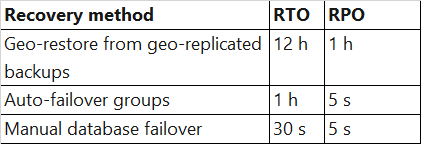Hi @T West , using geo-replication or failover groups could definitely help dealing with data redundancy or data loss.
You need to understand the maximum acceptable time before the application fully recovers after the disruptive event. The time required for application to fully recover is known as Recovery time objective (RTO). You also need to understand the maximum period of recent data updates (time interval) the application can tolerate losing when recovering from an unplanned disruptive event. The potential data loss is known as Recovery point objective (RPO).

You can use either of geo-replication or failover groups with proper configuration you will have almost no data loss.
However, geo-replication is currently not supported in Azure Sql managed instance, so if in future you want to switch to managed instance you need to use failover groups.
In nutshell, as you are using Azure Sql Database you can still go with geo-replication but it would make more sense if you could just browse through below article as well before choosing any options:
https://azure.microsoft.com/en-in/blog/understanding-and-leveraging-azure-sql-database-sla/